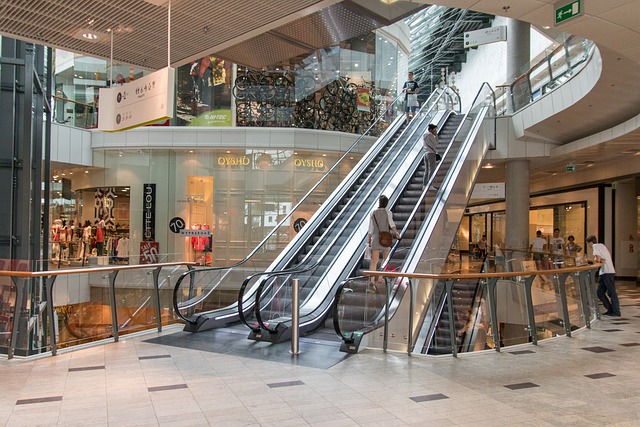By JB Newman
In 2021, Forbes referred to Gen Z as “the sustainability generation,” citing the demographic’s increasing preference to buy from sustainable brands and spend more on sustainable products.
Today, the observation rings more accurate than ever. A recent industry report from First Insight reveals that 62% of Gen Z shoppers prefer to buy from sustainable brands, while 73% are willing to pay more for sustainable products. Meanwhile, Gen Z and Millennials are the most likely to make purchasing decisions based on personal, social, and environmental values.
The findings indicate that Gen Z expects retailers and brands to prioritize sustainability to meet the shifting demands of these next-generation consumers and remain competitive in the market. Over time, this shift in Gen Z’s sustainable shopping preference has led to fashion retail and companies innovating alongside technological advancements. In this post, we’ll take a look at how the sustainability generation is helping reshape fashion retail:
Sustainability initiatives at fashion week
Fashion weeks are highlight events for enthusiasts trying to keep up with the fashion industry, as these play a significant role in dictating and establishing future and current fashion trends. It’s no surprise, then, that these shows can emphasize the shift towards sustainable fashion. Some sustainability initiatives at Berlin Fashion Week included Fashiontech, a conference series exploring the intersection of fashion and technology and how tech, such as 3D printing and digital design, can drive sustainable practices.
Today, other fashion weeks around the world are following suit. Over the years, Nairobi Fashion Week has started to focus on sustainable fashion in Africa, including showcasing eco- and culturally conscious brands. New York and Paris Fashion Weeks have also showcased sustainable fashion brands committed to responsible sourcing, ethical production, waste reduction, and inclusivity, showing that sustainable fashion gradually contributes to shifting fashion trends.
A move toward circular fashion
It’s hard to talk about sustainability in fashion without including discourse on fast fashion. In a previous post, we highlighted some Earth.org stats on fast fashion, including the industry’s waste production reaching an estimated 92 million tons annually. While some shoppers may prefer fast fashion thanks to its cheapness, convenience, and versatility, the rapidly growing industry also comes at the cost of questionable labor standards.
In response, fashion retailers and brands, including luxury names, embrace “circular fashion” by repairing, revalorizing, and revitalizing products. This includes implementing recycling-based take-back programs that safely and ethically dispose of fashion waste while encouraging brand loyalty through discounts and other incentives. Meanwhile, brands are increasingly using recycled materials for their fashion products.
The rise of thrifting and secondhand fashion
Finally, another major shift in fashion retail due to Gen Z’s commitment to sustainability is the rise of thrifting. In 2023, data from Statista found that the global market value of secondhand and resale apparel was worth $197 billion. Researchers expect the industry to grow to roughly $100 billion by 2026. Aside from visiting physical thrift stores, Gen Z has also moved towards online platforms and smartphone apps to buy secondhand clothing. Social e-commerce platform Depop, which champions circular fashion to boost sustainability, registered 464,000 monthly downloads globally in December 2023.
Meanwhile, more and more brands and retailers are shifting to digital to offer shoppers a more accessible thrifting experience. For example, e-commerce platforms like ThredUp and Poshmark continue to provide shoppers with an easier way to buy and sell fashion pieces. Meanwhile, internal eBay data showed that clothing and shoes with the keyword “thrifted” in the listing title rose 400% between 2023 and 2024. Today, thrifting and secondhand clothing helps reduce fashion waste and gives shoppers a more affordable option to own and wear luxury fashion products.
The future of sustainable fashion is bright, but further initiatives and widespread adoption beyond Gen Z will be necessary to create a truly sustainable system in fashion retail.
Article exclusively for retailistmag.com by JB Newman
Related Articles

The New Frugality: How Inflation and Tariffs Are Reshaping Consumer Spending
One of the most telling shifts is how shoppers approach decision-making. Where convenience once dominated, consciousness now plays a larger role. People are researching more before making a purchase, comparing prices across multiple platforms, and questioning whether they really need the product in the first place.

Embracing new concepts vs the return to brick-and-mortar
Balancing the return to physical retail and the development of new technologies to enhance customer experience and drive operational efficiency for long-term success.
Enartis to Acquire Parsec in Winemaking and Retail Deal
The deal will bring Enartis and Parsec together to help wineries manage every part of production more easily and efficiently, from grape to bottle.

A Practical Guide to Retail AI Use Policies for Retailers and HQ Teams
AI can bring new opportunities for retailers, but this innovation must come with responsibility.


 for the latest news and job opportunities in retail tech
for the latest news and job opportunities in retail tech 